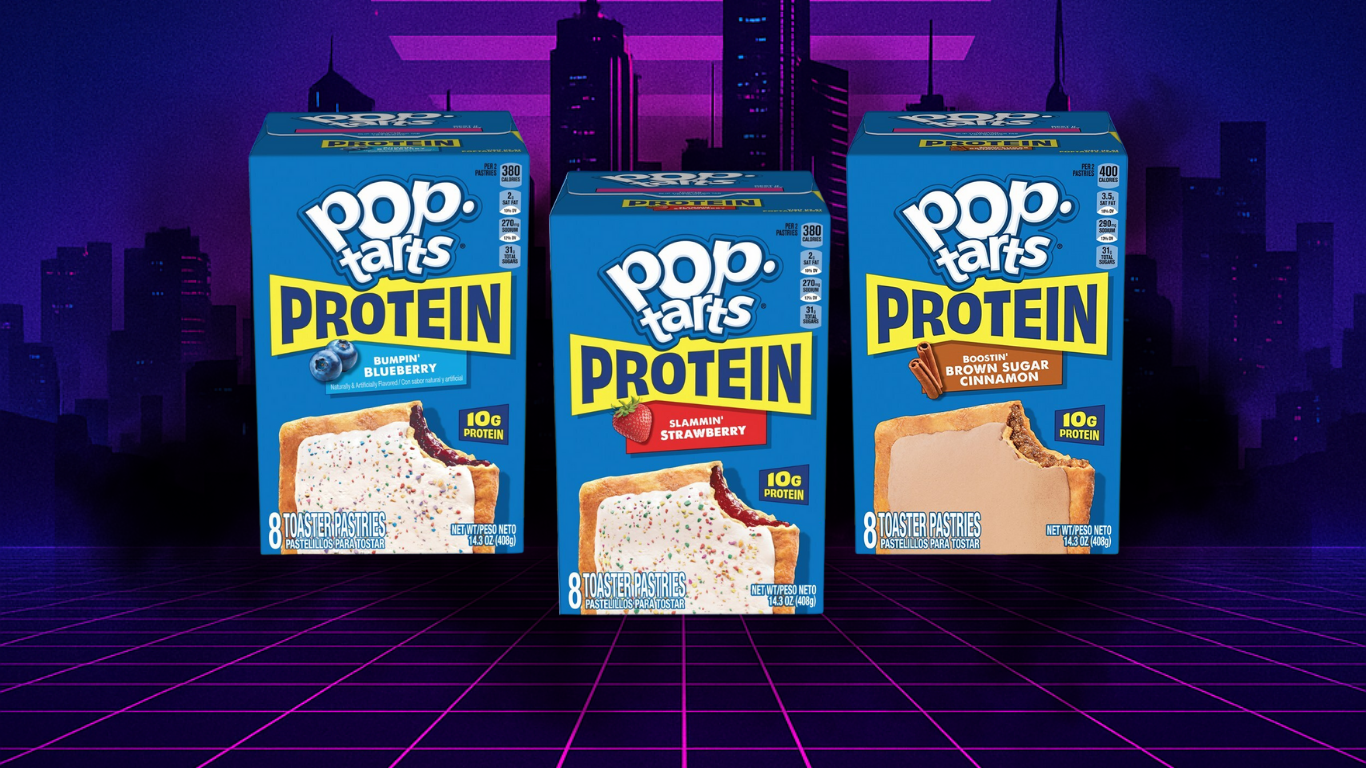Pop-Tarts Protein: The Sweetest Scam of 2025
Pop-Tarts just made headlines across the fitness and food world — not for a new crazy flavor, but for something way more strategic.
They’ve officially launched Pop-Tarts Protein, a “bold innovation” that supposedly blends nostalgia with nutrition. On paper, that sounds like a win for anyone trying to get more protein in their day. But once you look past the shiny marketing and the word protein plastered on the box, it’s clear what this really is — a marketing move disguised as a health trend.
The Claim: Pop-Tarts, But “Better”
According to Kellogg’s, the goal is simple — give Americans a protein boost in a familiar, crave-worthy format.
The new Pop-Tarts Protein line features three classic flavors:
Slammin’ Strawberry
Boostin’ Brown Sugar Cinnamon
Bumpin’ Blueberry
Each pastry packs 10 grams of protein per serving, compared to the original’s 4 grams. The brand claims this aligns with consumer demand, pointing to data showing that 61% of snackers are now seeking protein options.
And that stat is legit — Americans are finally waking up to how important protein is for energy, body composition, and appetite control.
That’s awesome. But this is where things start to go sideways.
The Truth: It’s Still a Dessert
Despite the “protein” label, each of these pastries clocks in at 380–400 calories with around 31 grams of sugar.
Let that sink in.
That’s as much sugar as a can of soda — and barely enough protein to move the needle.
Here’s what that means in real terms:
Pop-Tart Protein (2 pastry): Calories: 380-400 Protein: 10g Sugar31g
Regular Pop-Tart (2 pastry)+ Protein Shake Combo: Calories:~450–500 Protein: 30-35g Sugar: 31g
If your goal is muscle gain, recovery, or just stable energy, 10 grams of low-quality protein mixed with 30 grams of sugar isn’t it. You’d get more value pairing a regular Pop-Tart with a protein shake and calling it a day.
The Problem: The “Protein” Trap
This move isn’t about helping people eat healthier — it’s about selling a story.
The food industry has caught onto the protein trend in a big way. Every major brand — from cereals to snack bars to cookies — is trying to ride the wave. The word protein has become the new low fat or gluten free buzzword. It doesn’t mean a product is high-quality or nutrient-dense. It just means the marketing team knows what sells.
Pop-Tarts Protein is the perfect example:
They took a sugar-loaded product, added a sprinkle of cheap protein isolate, and now they’re positioning it as “better for you.”
What You Should Do Instead
If you love Pop-Tarts — eat the damn Pop-Tarts. No guilt. Just be honest about what they are: a treat, not a protein source.
If you want to actually make it a better choice, do this:
Pair it with a protein shake or a Greek yogurt.
Add a serving of fruit for fiber and micronutrients.
Keep it intentional — not daily, not random.
That way, you get the best of both worlds — the flavor you crave and the nutrients your body needs.
The Bigger Picture
Here’s the real takeaway — protein is trending, and Big Food knows it.
That’s good news in one sense — it shows that more people are starting to understand the importance of protein for muscle, metabolism, and mental performance.
But it also means companies are going to push “protein” versions of everything to cash in on that awareness.
And that’s where The Powerhouse Journal steps in.
Our job is to help you navigate the noise, understand what’s real, and make smarter decisions — not just for aesthetics, but for long-term health and performance.
Final Thoughts
Pop-Tarts Protein isn’t innovation — it’s marketing dressed up in macros.
It’s proof that brands are paying attention to the protein movement, but also a reminder that we still need to think critically as consumers.
If you’re serious about fueling performance, recovery, and your goals — don’t fall for buzzwords. Look at the label. Understand the ingredients. And always ask:
“Is this actually helping me — or is it helping them sell more boxes?”
Because around here, we don’t buy into the bullshit. We break it down.
